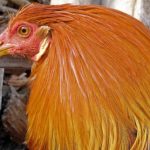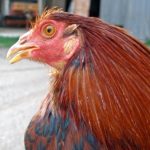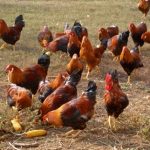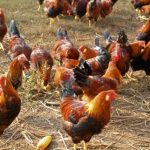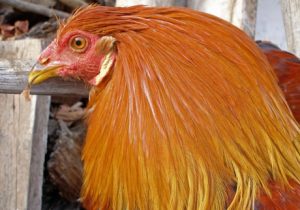
Name
Capon of Morozzo
Seal of quality

Prodotto Agroalimentare Tradizionale (PAT) / Typical food-farming product.
Description
Shiny multicoloured plumage, small yellow head, thin orange-yellow claws, yellow straw-coloured skin and weighing between two and 2.7 kilograms are some of the characteristics of this important animal. The only choice species for the production of the traditional Cappone di Morozzo is the so-called “nostrana” (local), deriving from the “Bionde Piemontesi”. By capon, we mean a male chicken, surgically unsexed (“caponisation”) before reaching sexual maturity and, in the case of the Cappone di Morozzo, slaughtered at least 220 days of age. The women of the farms have the delicate responsibility of cutting away the sexual organs, lappets and crests, resewing the best birds having recently undergone these operations.
A pair of capons is synonym of product authenticity. In fact, two cocks, even if tied, could never stay together and this is the reason why the best farmers, in order to make it understood that they are two capons, bring a pair to be exhibited, in the most important pre-Christmas December fair. The Morozzo capon must necessarily be ground-bred, left free to move in the farmyard and with fenced-areas on non-intensive farms (200 animals at the most), and fed exclusively with vegetable or natural feed. The Morozzo capon is recognised by means of a numbered label bearing the farmer’s details of identification.
Area of production
The Consorzio di Tutela e Valorizzazione del Cappone di Morozzo e delle Produzioni Avicole Tradizionali (Association for the Protection and Development of the Cappone di Morozzo and for Traditional Avicultural Production) is operating in thirteen communes: Morozzo, Margarita, Castelletto Stura, Montanera, S. Albano Stura, Trinità, Magliano Alpi, Rocca de Baldi, Mondovì, Villanova Mondovì, Pianfei, Beinette and Cuneo.
History
The origins of the fair date back to the period in which Napolean came through, when the sharecroppers would give the Christmas gift of a couple of capons to the owners of the lands on which they had bred them. Delicious capon meat was served on the tables of our ancestors. Speaking of this,, Jean Francois Reel wrote that in 1513, this special dish used to be served in Rome on special occasions. More precisely, in Capitol Square , in honour of Giuliano de Medici, they
Would feast and eat capon: cooked with must, boiled and covered with white sauce, in cinnamon sauce.
It is thanks to the women that this traditional breeding method has been continued and, for them in particular, the prizes won on the day of the fair will be reason for pride and merit: gold medals which award the patient work begun in spring resulting in tender and delicate meats, authentic delights for the Christmas table.
The “Consorzio per la tutela e la valorizzazione del Cappone di Morozzo e delle produzioni avicole tradizionali” was founded in May 2001, the object of which is the “protection of the cappone di Morozzo and of farmyard birds”. The farmers concerned with the production of the traditional cappone di Morozzo must be registered at the “Consorzio per la tutela e la valorizzazione del Cappone di Morozzo e delle produzioni avicole tradizionali”. On registering, the breeders themselves undertake to observe the regulations and to declare their production capacity for the annual Fair. In order to improve the quality of the production, to satisfy requirements and to offer the consumer greater guarantees, as from 2002, this association has appointed the association ASPROAVIC of Carmagnola (Turin) to carry out selections for the identification of the breed of origin of the “Cappone di Morozzo”, organoleptic analysis and periodic control of the registered farms as to respect of the conditions established by the disciplinary regulations.
